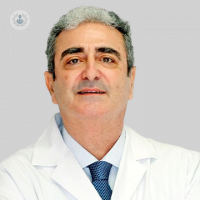3 frequently asked questions about cataract surgery
Written by:Cataract is clouding of an inner lens in each eye and we called crystalline. It assumes the leading cause of vision loss reversibly in humans and also represents the main surgical healing process worldwide. Although there are many acquired causes such as intake of certain drugs, systemic diseases, including congenitally appearance, most often it is due to over the years and, therefore, it is more common in elderly patients. The main symptoms presented by patients in consultations of Ophthalmology are:
- blurred or hazy vision Painless
- Sensitivity to light
- Trouble seeing in the dark
- Halos around lights
- Need for a clearer reading light
- desaturated colors or yellowish
- Frequent changes in prescribing glasses or contact lenses
- Double vision in one eye

What is cataract surgery?
The cataract surgery in global terms is the removal of such opacity and replacing it with an artificial lens that comes to trying to imitate as much as possible what the human lens has been playing throughout his life as he was clear and young. Today usually takes no more than 10-15 minutes in most cases does not require stitches after the completion of the same and developed under topical anesthesia. In recent years we have perfected platforms including new devices to perform are the same as femtosecond lasers and intraocular lenses including high-tech.
Can complications cataract surgery?
Like any surgical procedure can have complications, and these, although they appear in a low percentage, must be taken into account to customize the technique and make a good indication for surgery. The most feared complications are infection, which should be treated urgently and for which it is intended to prevent a protocol for pre treatment, infra and postoperatively, rupture of the posterior capsule (surface where it should be supported as usual intraocular lens ) and altered corneal endothelium (cell layer on the inner surface of the cornea), especially in very mature cataracts, which can prevent proper visual recovery.
What measures should be taken after cataract surgery?
If all goes as usual, the return to working life and routine actions of the person themselves are almost immediate, since the process is usually done with only one incision about 2 mm, which even helped a number of topical medications It allows us an early rehabilitation.


